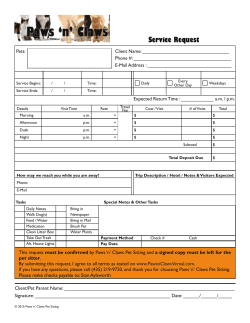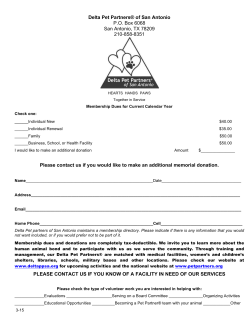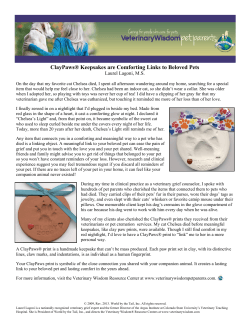
Pet Food- Facts & Fiction - Livonia Veterinary Hospital
TRAINING TOOL Demystifying PET FOOD FACTS AND FICTION This quick-start guide will get you on your way to confident pet food recommendations for your veterinary clients. C hances are, clients ask you several times a day about pet foods: What should I feed my pet? Should it be grain-free? What about raw diets? If you’re having trouble navigating the wide array of pet food choices when your clients come to you asking for nutrition advice, check out this quick guide to get you started. For more visit dvm360.com/ JerominPetFood. Another great place to start research is with the annual pet food manufacturer list published by the Whole Dog Journal. Identify the real manufacturer To be considered a high-quality pet food manufacturer the company will: > Make the food in its own facility and employ a boardcertified veterinary nutritionist > Have an American Feed Control Officials (AAFCO) feeding trial statement > Practice strict quality control measures as well as conduct and publish research on animal nutrition Does the bag read “manufactured by” as opposed to “distributed by” or “manufactured for”? Many foods are co-packed, or made by several different manufacturers and then labeled by the end-of-the-line company that sells it. The flip side of co-packing is mass manufacturing, where one company manufactures the food for many labels. Don’t trust what you read Another problem for veterinary professionals is guaranteeing that the label ingredients are actually present in the food. A recent article reported that 20 of the 52 foods that were PCR-tested for ingredients showed a discrepancy between labeled ingredients and what was in the actual diet.1 This can be a problem when clients are trying to avoid a potential food allergen for their pets. When completing an allergy trial, it appears that therapeutic limited-ingredient diets or supervised homecooked diets are a better choice than OTC diets claiming to be limited-ingredient, as some of these foods don’t live up to their promises. Most clients think that eliminating “wheat” or grains from the diet is all that’s needed to rule out a food allergy, but patients must avoid corn, wheat, egg, beef, chicken, soy, dairy and any other previously fed protein during the eight- to10-week diet trial. Familiarize yourself with fad diets “Grain-free” is the new buzzword for pet owners. The problem is that grain-free does not mean hypoallergenic, and there is no set AAFCO definition of “grain-free.” So it can mean different things to different manufacturers. Pet owners are also gravitating toward raw food diets because “that’s what animals eat in the wild.” Unfortunately, most reports concerning raw diets are anecdotal with a lack of long-term, high-quality studies. Did you know? The term “veterinarian-approved” is not allowed on pet food labels. Manufacturers can, however, use the terms “veterinarian-recommended,” “veterinarian-developed” or “veterinarian-formulated” if the company meets specific criteria set out by the association. 1. Okuma TA, Hellburg RS. Identification of meat species in pet foods using a real-time polymerase chain reaction (PCR) assay. Food Control 2015;50:9-17. SOURCE: ALICE M. JEROMIN, RPH, DVM, DACVD
© Copyright 2025










